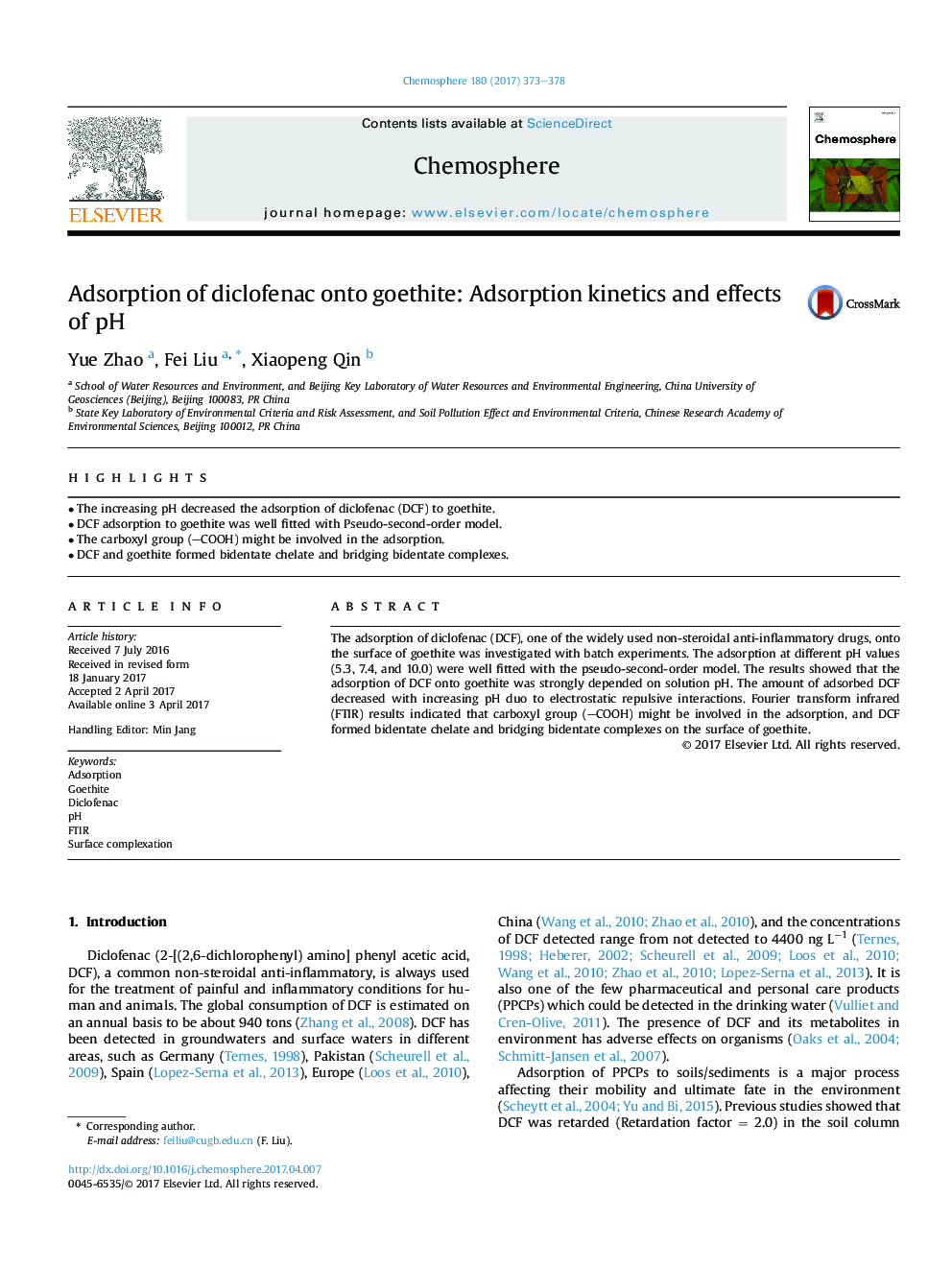| Article ID | Journal | Published Year | Pages | File Type |
|---|---|---|---|---|
| 5746121 | Chemosphere | 2017 | 6 Pages |
â¢The increasing pH decreased the adsorption of diclofenac (DCF) to goethite.â¢DCF adsorption to goethite was well fitted with Pseudo-second-order model.â¢The carboxyl group (COOH) might be involved in the adsorption.â¢DCF and goethite formed bidentate chelate and bridging bidentate complexes.
The adsorption of diclofenac (DCF), one of the widely used non-steroidal anti-inflammatory drugs, onto the surface of goethite was investigated with batch experiments. The adsorption at different pH values (5.3, 7.4, and 10.0) were well fitted with the pseudo-second-order model. The results showed that the adsorption of DCF onto goethite was strongly depended on solution pH. The amount of adsorbed DCF decreased with increasing pH duo to electrostatic repulsive interactions. Fourier transform infrared (FTIR) results indicated that carboxyl group (COOH) might be involved in the adsorption, and DCF formed bidentate chelate and bridging bidentate complexes on the surface of goethite.
